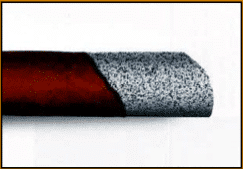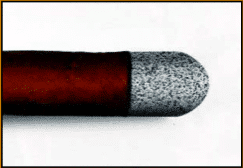The combustion is a very important aspect during a smoke, which should not be underestimated. In fact, it can completely affect the enjoyment of the cigar. Combustion depends on multiple factors. In this article we will try to analyze the ability of cigar roller in the factory, and the visible consequences in the form of the ash during the smoke. Five different “forms of ash“ can be found, resulting from the advancement of the burn.
- The picture shows a combustion with “flat ash“. Contrary to what some people think, this is not the best type of combustion possible for a cigar. It is true that it does not entail particular problems in terms of fire ring, but the fact that the ligero must burn slower than the other leaves can make this type of combustion not ideal. It is typical of short filler cigars (made with tobacco cuttings and not with whole leaves).
- The picture highlights what is commonly called a conical combustion. When the smoke mechanic is optimal, the combustion ring is regular, and the smoke reaches the mouth perfectly, most likely the burn will highlight this type of shape (after the ash has fallen). The Ligero is positioned correctly in the center of the cigar and the Volado on the sides will promote a regular and continuous combustion at the right temperature.
- In this image we find a “conical crater” combustion. In this case it is not necessary to talk about a manufacturing defect. Probably, in this case, the Seco was used instead of the Volado as a binder, but the combustion can still be considered correct and without problems, with the only peculiarity of highlighting this curious conical crater in the central part of the burn. The Ligero is in any case correctly positioned and burns at the right temperature to favor a correct advancement of the burn line.
- The picture shows an irregular “lateral combustion“. The cigar burns faster on one side, and this is normally due to the fact that the roller has not placed the Ligero exactly in the center of the cigar. The higher the positioning mistake, the greater the effect of the irregular combustion. This is due to the burning of the Ligero, which burns slower than the other types of leaves.

- In the image a combustion with “spoon ash” was highlighted. This is one of the most common defects and is characterized by a cavity positioned in the center of the burn. In this circumstance the roller has positioned the Volado leaves in the central part, and this will have, as a consequence, a slower advancement of the burn line with respect to the central part of the cigar. This is due to the temperature, which is not high enough to ensure proper combustion of the Li

Images: cigar journal.




